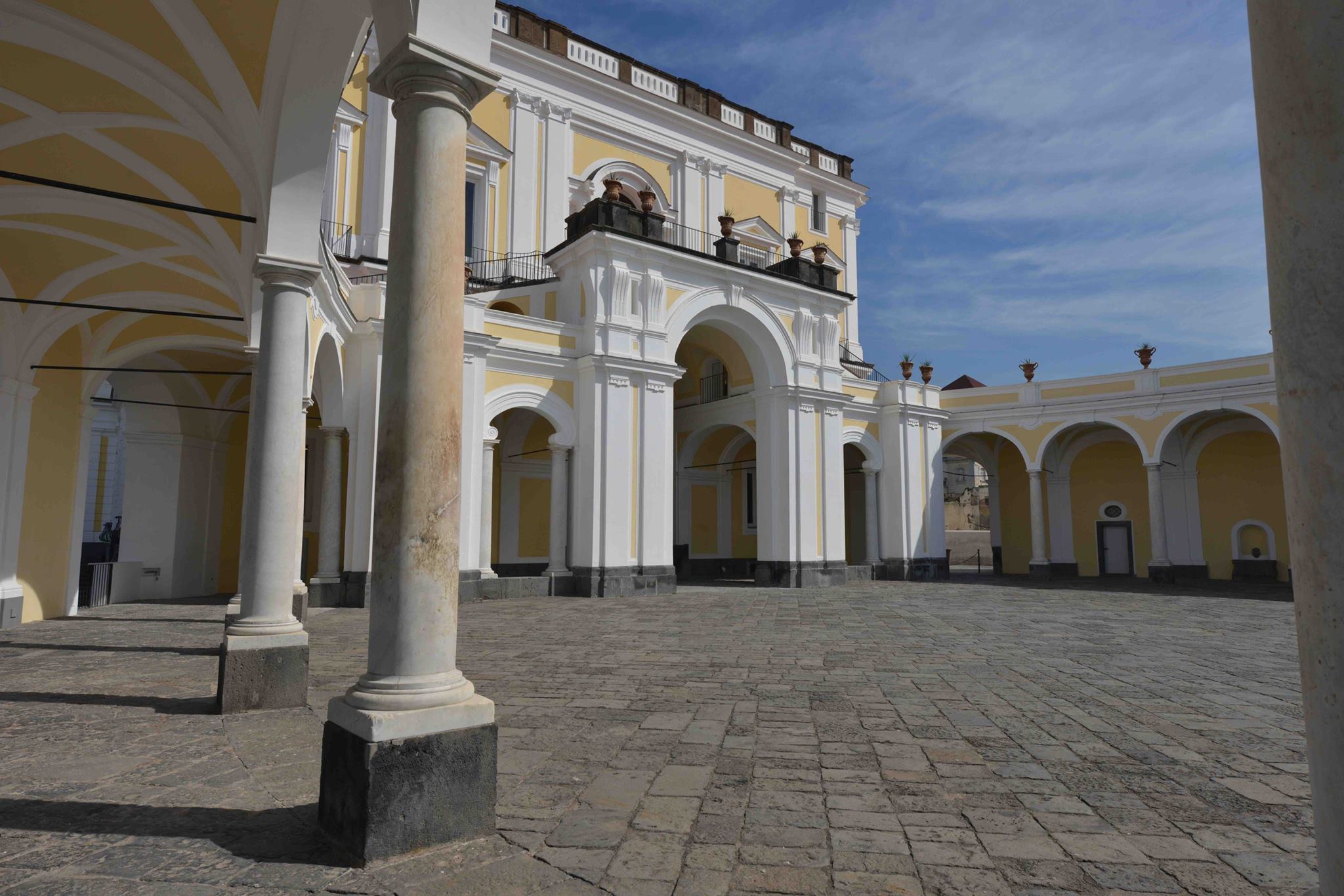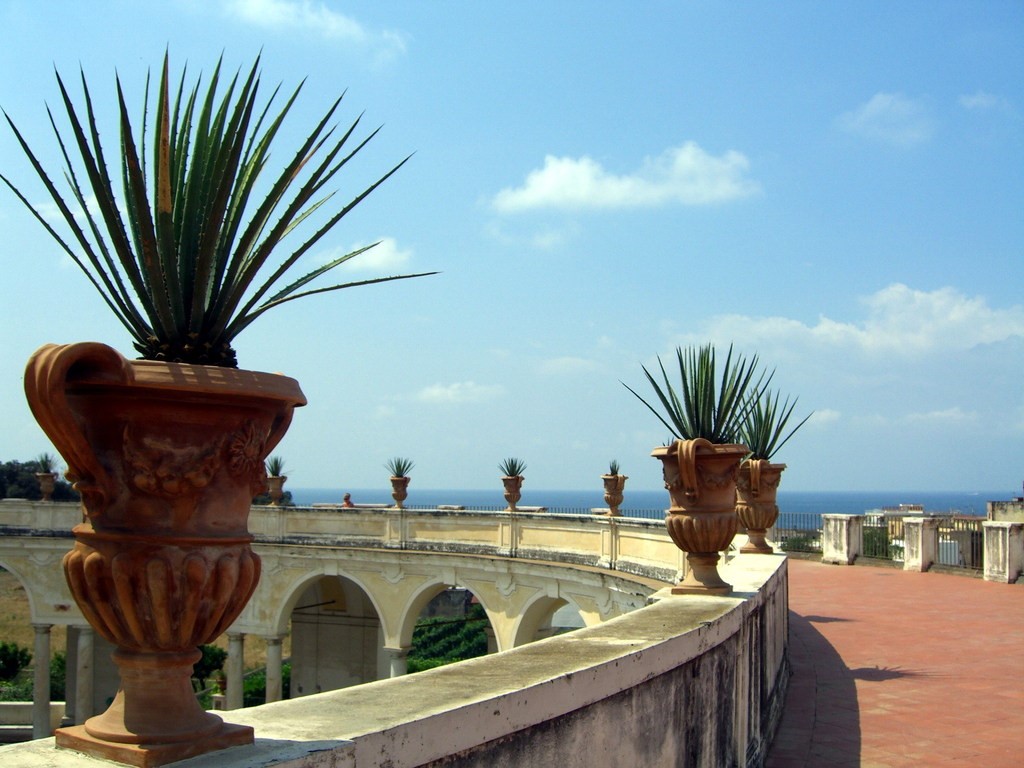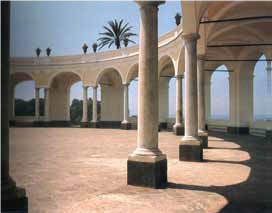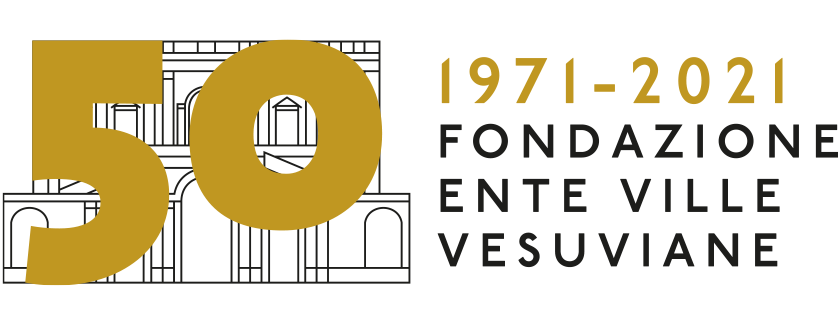Ticket details
From Egg to Apples
In ancient Herculaneum

Bring your students to discover Villa Campolieto, one of the most beautiful 18th-century Bourbon villas. Until December 31st, visit the special exhibition “From Egg to Apples”, featuring valuable archaeological artifacts from Herculaneum, selected by experts from the Archaeological Park.
What to expect
It was 1738 when Charles of Bourbon and Maria Amalia of Saxony, his wife, chose Portici to build a new royal palace and to begin the excavations of the Roman city of Herculaneum.
The lush blooming woods on the river of lava, the gulf enclosed by the islands of Capri, Ischia, and Procida, the ever-active volcano, and the unearthed Roman ruins—already uniquely attractive on their own—converged into an unrepeatable whole.
From that moment on, all Neapolitan nobles followed the Bourbon court and built one or more villas along the coastal area at the foot of Mount Vesuvius for the summer season, creating an architectural complex unique in the world for its number and beauty: the 122 Vesuvian Villas, a dialogue between nature and artifice, sea and volcano, Rococo and Neoclassicism.
In the area within the boundaries of the municipality of Ercolano, the concentration of Vesuvian Villas is dense and particularly prestigious due to the importance, within the economy of the Kingdom of Naples, of the patrons. The stretch of road showcasing them in succession is known as the Golden Mile: buildings constructed by architects such as
- Luigi Vanvitelli
- Ferdinando Fuga
- Ferdinando Sanfelice
- Domenico Antonio Vaccaro
completed by vast gardens skimming the coastline and pictorial decorations created by great artists.
The perspective escapes of colonnades, allegorical figures, and portraits of the surrounding environment were painted with the intent to feel in touch with nature even while inside the palaces.
Ancient microcosms devoted to pleasure, unmissable stops of the Grand Tour, offering simultaneous views of the sea and the volcano. After decades of abandonment, careful and rigorous restorations have brought them back to life. Today, they serve as a unique and exceptional setting for cultural events of all kinds, where history and pleasure fill the air.

Villa Campolieto
Located in one of the most fortunate and evocative positions, downhill from the Bourbon road of Calabria, not far from the Royal Palace of Portici and adjacent to Villa Favorita, Villa Campolieto was built by will of Prince Luzio De Sangro, Duke of Casacalenda, who in 1755 entrusted the design and execution of the works to Mario Gioffredo.
Forced to abandon the project around 1760, he was replaced by Luigi Vanvitelli, who directed the works from 1763 until his death in 1773. The work was completed in 1775 by his son Carlo.
Villa Campolieto, acquired in 1977 by the Agency for the Vesuvian Villas—now a Foundation—was restored over six years and returned to its original splendor and made open to the public. The building features a square plan, with four wings organized around a central Greek-cross gallery, and develops across five levels. The rear façade opens with an elliptical portico with Tuscan columns, forming a covered belvedere that ends in a magnificent sea view, with a pool and an elliptical staircase connecting the structure to the garden below.
To the left, the imposing stable designed by Gioffredo features cross vaults and piperno pillars. Vanvitelli, “upending Gioffredo’s original design,” completely redesigned the villa’s grand staircase, creating a central ramp flanked by two lateral ones—based on a model tested in Caserta—enriching it with a grotesque mask and decorations placed inside the entrance arch, and six niches containing mythological statues lining the ascent to the noble floor. The vestibule features a dome-covered atrium flanked by two apsidal niches.
Its function was to welcome and guide guests to the various rooms of the apartment. From the room called “Cannocchiale” ("Spyglass"), due to its particular shape, one enters the family’s private rooms, eventually reaching the dining room—certainly one of the most evocative in the villa. Originally square with a barrel ceiling as designed by Gioffredo, it was transformed by Vanvitelli into a circular room using the so-called “Incannucciata” technique, which involves a wooden ribbing overlaid with bamboo canes, plastered, and then frescoed.

The fresco, decorating the entire room, is a work by Fischetti and Magrì, depicting the structural framework of a gazebo covered by a vineyard cultivated on the prince’s lands, where the family enjoyed relaxing with guests on sunny summer days.
With your back to the window, observing the fresco from right to left, you first encounter a group of people playing cards, including De Sangro; in the background appear the gulf’s islands. Past the door, one can spot one of the rare fresco self-portraits of Vanvitelli, gazing at the sky through a monocle.
The service doors blend into the fresco, part of which has been lost, along with one of the four seasons painted in the corners of the room. The “Hall of Mirrors,” located in this wing of the palace, was a female study, as suggested by the soft colors, where one would engage in conversation before entering the grand ballroom. Even though 18th-century Vesuvian villas were designed to favor outdoor over indoor use, great importance was placed on the Ballroom.
In what remains of the barrel-vaulted ceiling fresco, one can make out mythological figures with garlands, cherubs, and supporting architecture. The wall frescoes depict the myth of Hercules with eight medallions illustrating his life, two niches with statues of Hercules and Cupid, and lunettes above the doors portraying Abundance and Wisdom.
Stepping out onto the terrace, one can admire one of the most scenic and panoramic views of the Gulf of Naples—from Posillipo to Ischia, reaching Capri and the Sorrento Peninsula. On both sides of the landing, two staircases lead to the open-air walkway of the portico; heading to the right, four sentry boxes are visible, which marked the boundary of a fishpond and provided shade while fishing. In the background, the view opens onto the woods of the Royal Palace of Portici and the Herculaneum archaeological area.
Standing at the center of the walkway, we admire the architectural design of the elliptical staircase leading to the fountain and the Palm Grove. Continuing along the walk and turning away from the sea, we behold Mount Vesuvius dominating the landscape with its grandeur. On the same axis, Villa Ruggiero lies ahead, with Villa Favorita to the right.

Ville Vesuviane

Tourism in the name of Beauty
The territory of the municipalities of Naples, San Giorgio a Cremano, Portici, Herculaneum and Torre del Greco is adorned with 122 monumental buildings, the so-called Vesuvian Villas. The targeted interventions of the “Vesuvian Villas Institution”, now a Foundation, in the past fifty-five years have restored a new dignity to the immense heritage of the Baroque Villas of the 18th century.
In 1738, Charles of Bourbon and his wife, Mariamalia of Saxony, chose Portici as the perfect place to build a new palace and to begin the excavations of the Roman city of Herculaneum. From that moment all the Neapolitan nobles followed the court of the Bourbons and raised some villas for their summer stays in the coastal area at the slopes of the Vesuvius, creating the architectural complex of the 122 “Vesuvian Villas” that is unique in the world for its vastity and its beauty.
The concentration of the “Vesuvian Villas” in the area within the borders of the municipality of Herculaneum intensified so much that it became a sort of particular prestige and it took the name of the Golden Mile. In fact, the Vesuvian Villas that run along that stretch of road can be compared to stunning monuments enriched with vast gardens and pictorial decorations made by great artists. They were designed and built by renowned architects such as Luigi Vanvitelli, Ferdinando Fuga, Domenico Antonio Vaccaro, Ferdinando San Felice.
Some of these monumental buildings, such as “Villa Campolieto”, the Sea Park of “Villa Favorita” and “Villa Ruggiero” in Herculaneum and “Villa delle Ginestre” in Torre del Greco, after a careful and rigorous restoration, are currently under the direct protection and management of the Ente Ville Vesuviane Foundation. They constitute the venues where the institutional activity takes place and countless cultural events and initiatives are carried out.
Features
you always have these benefits included
How to reach the property
Villa Campolieto
Corso Resina, 283 - 80056 Ercolano (NA)
Pinch and drag for more details
Walk 800 meters, 10 minutes
Walk 1.1km, 14 minutes
Free indoor parking
The opening hours of the structure
Online ticket office contacts
Structure contacts


